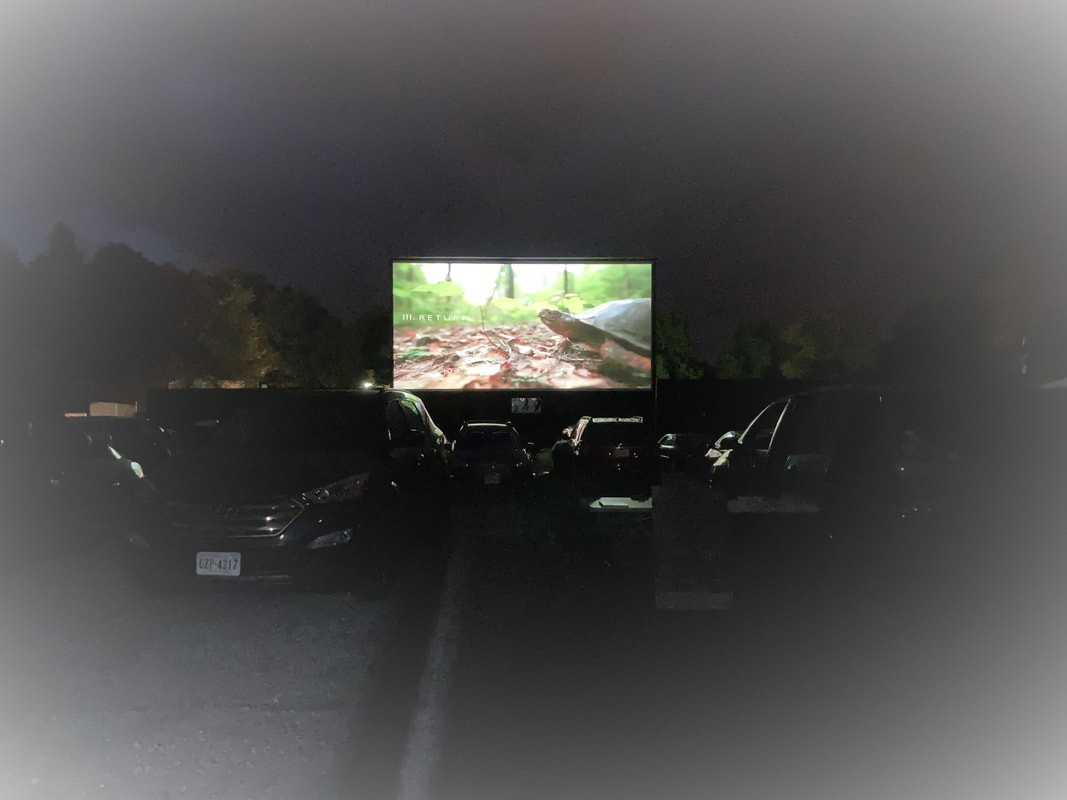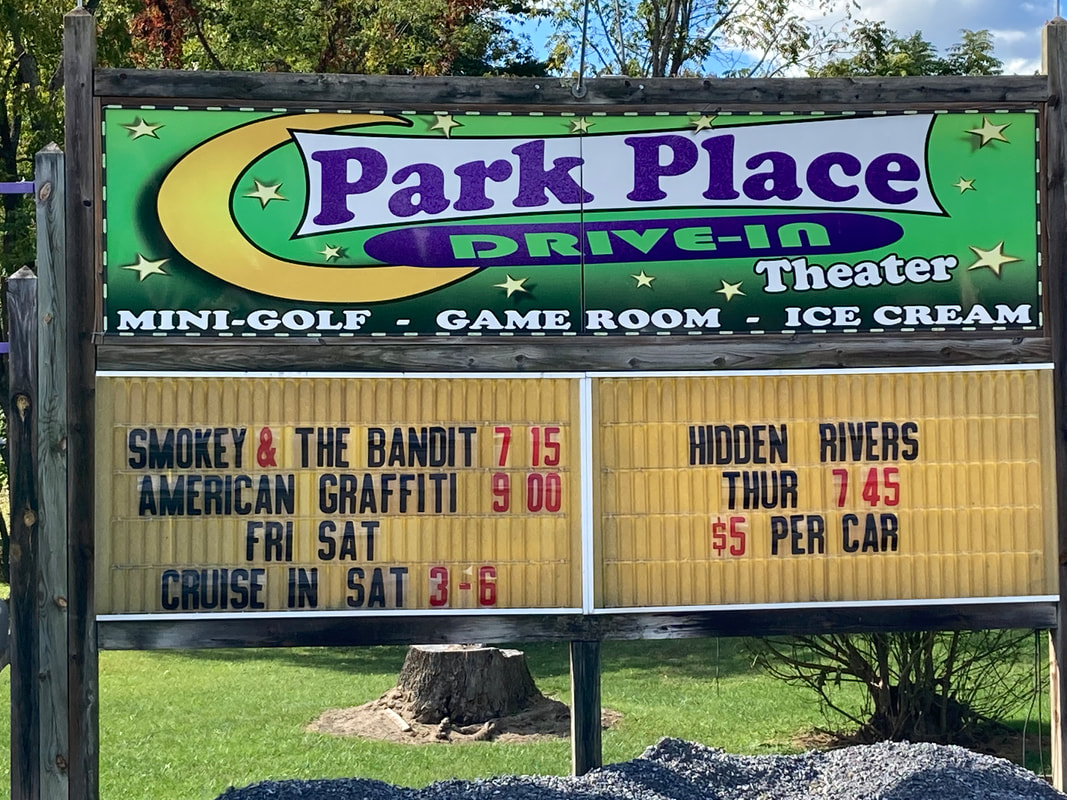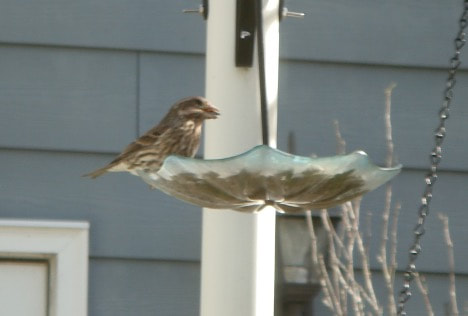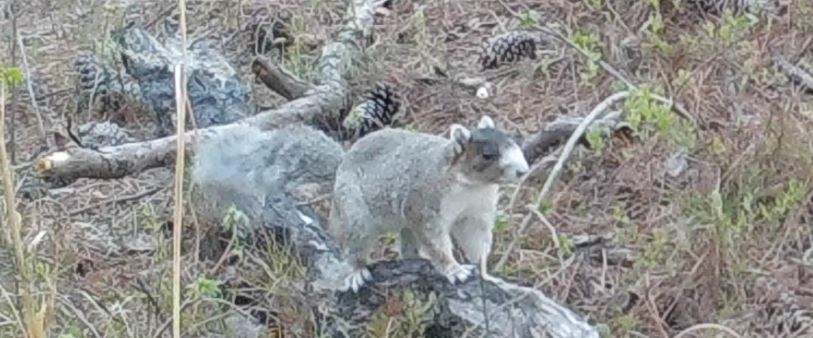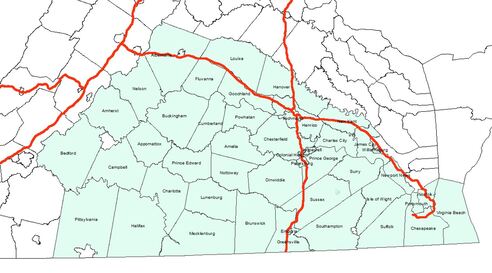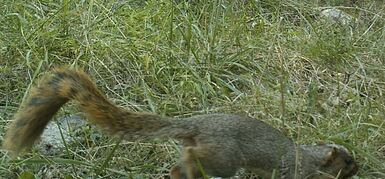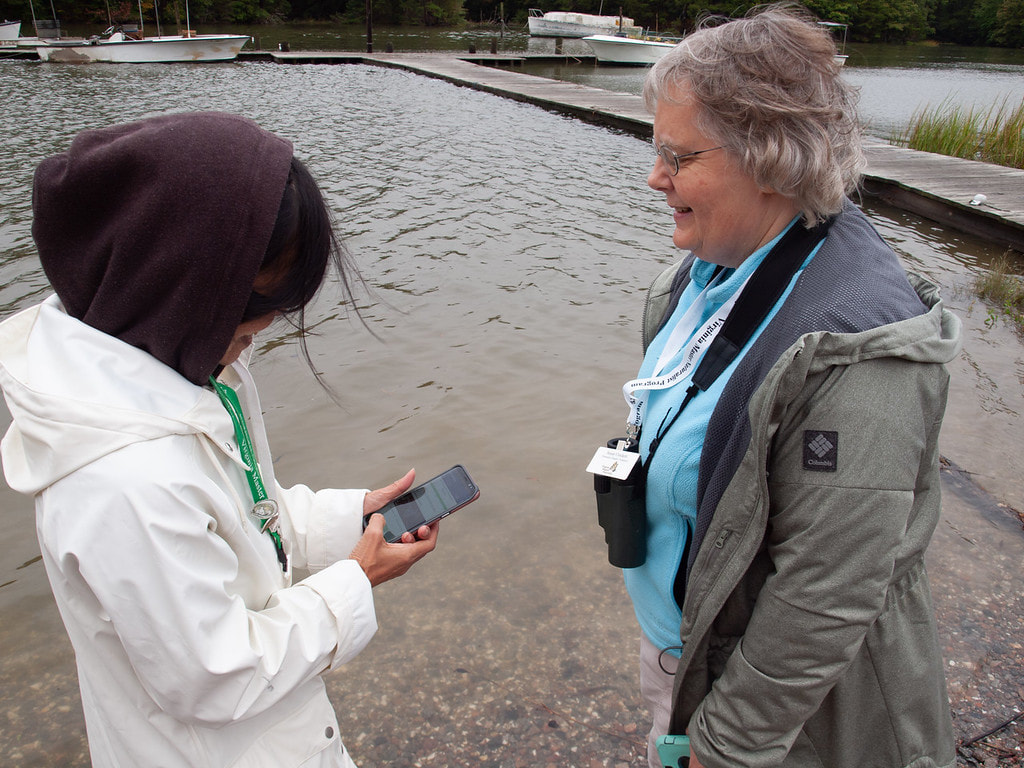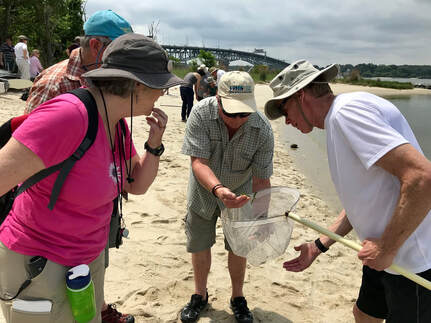Holston Rivers Chapter Goes to the Movies
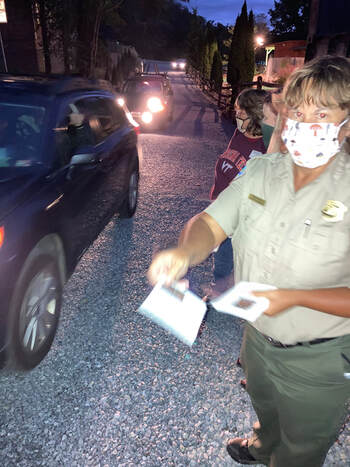 The chapter gave the movie-goers educational information on aquatic natural resources. Photo by VMN-Holston Rivers Chapter.
The chapter gave the movie-goers educational information on aquatic natural resources. Photo by VMN-Holston Rivers Chapter.
The Holston Rivers Chapter of VMN had purchased the rights to do a showing of the Freshwaters Illustrated film, “Hidden Rivers.” The intention was to show it during Abingdon’s famous Virginia Highlands Festival in August, but the festival, like everything else in 2020, got cancelled.
After much hand-wringing, the chapter’s sponsor, Tanya Hall (Chief Ranger for Visitor Experience at Hungry Mother State Park) suggested talking to the owner of the drive-in movie theatre that is about 4 miles from the gates to the state park. The drive-in would allow us to follow COVID-19 protocols in addition to providing a unique and fun location. Park Place Drive-In was happy to be part of the plan, and the results were overwhelming.
The purpose of showing the film was strictly educational, but the group ended up charging a nominal fee to cover the cost of the venue and technical support (and many patrons made donations to support the project). There was hope of having 40-50 people in the audience at the Highlands Festival, but, on a moonlit night in October, more than 85 cars (more than 160 patrons) pulled into the Park Place Drive-In to watch this beautiful movie about the rivers and aquatic life in Appalachia. The group also showed two short films; one on bringing back brook trout to Tennessee streams and one on the Hellbender Salamander.
To add to the fun, one of the “stars” of Hidden Rivers drove up from Chattanooga to join the fun. Casper Cox is featured in the movie talking about the importance of these rivers, and he has written a book on river snorkeling. He sold some books and, of course, posed for some pictures.
All in all, the event landed squarely in the “silver linings” category during these unusual times as members noted that the attendance was far greater than any of them imagined. Those in attendance texted, emailed, and added Facebook comments to thank the chapter for an event that opened their eyes to many issues — and also provided a beautiful evening under the stars.
Holston Rivers Chapter Goes to the Movies Read Post »

